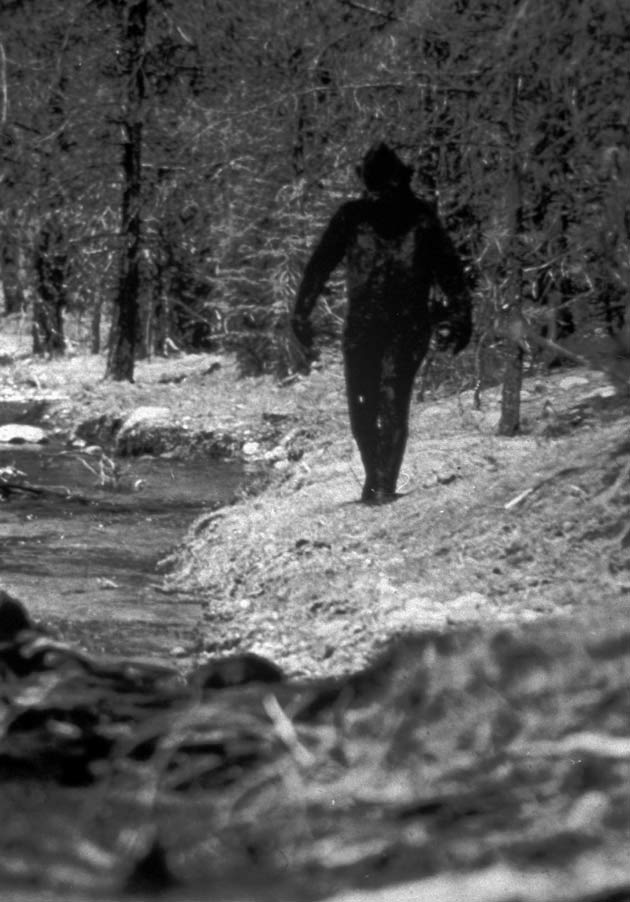Yeti 'Nests' Found in Russia?

Bigfoot researcher and biologist John Bindernagel claims his research group has found evidence that the Yeti (a Russian "cousin" of the American Bigfoot) not only exists, but builds nests and shelters by twisting tree branches together.
"We didn't feel like the trees we saw in Siberia had been done by a man or another mammal.... Twisted trees like this have also been observed in North America and they could fit with the theory that Bigfoot makes nests. The nests we have looked at are built around trees twisted together into an arch shape," Bindernagel told the British tabloid The Sun.
Bindernagel was part of a small group of scientists who visited western Siberia to examine evidence of the Yeti in October. That group made headlines around the world for issuing a statement that they had "indisputable proof" of the Yeti and were 95 percent sure it existed based on the evidence – a few strands of hair – they found.
Tree twisting, also called splintering, has been claimed as Bigfoot evidence for decades throughout the Pacific Northwest and elsewhere. In some cases tool markings have been found on trees said to have been twisted by Bigfoot. This suggests that the creatures are even possibly more intelligent than previously suspected and may be able to somehow locate and use pliers, monkey wrenches, and other common hardware tools. [10 Mythical Beasts That Might Exist]
Unless the marks were made by human hoaxers.
Although many of the "mysteriously" twisted tree limbs are conveniently near ground level, some are found at the top of trees. Bigfoot researchers claim these are stronger evidence of the Yeti's existence, because whereas any hoaxer could easily twist small, waist-level branches, only a Bigfoot-like animal would be able to climb up that high.
However, that raises the not-insignificant question of how a huge, heavy animal would get to the top of a tree without breaking it, or at least snapping a few branches on the way up. Bigfoot are often said to be between 8-and-12-feet tall and weigh several hundred pounds; surely if such a tall, heavy animal made its way up a tree – most of the trees that have been found twisted are spindly in nature – there would be much more obvious damage than a few woven branches at the very top. And if Bigfoot and Yetis spend time perched at the tops of trees doing arboreal decorating, why aren't they spotted more often?
Get the world’s most fascinating discoveries delivered straight to your inbox.
There's even more reason to be skeptical of Bindernagel's claim. According to Sharon Hill of the Doubtful News blog, another scientist who participated in the same Russian expedition concluded that hoaxing was afoot. At a Bigfoot conference that Hill attended last month, Jeff Meldrum (a professor of anatomy and anthropologist at Idaho State Universitywho endorses the existence of Bigfoot) said that he suspected the twisted tree branches had been faked. Not only was there obvious evidence of tool-made cuts in the supposedly "Yeti-twisted" branches, but the trees were conveniently located just off a well-traveled trail.
Meldrum, who eventually concluded that the whole Russian expedition was more of a publicity stunt than a serious scientific endeavor, refused to sign the group's statement endorsing "indisputable proof" of the Yeti, and returned to the United States. Others, including Bindernagel, remain convinced that conclusive Yeti and Bigfoot evidence is just around the corner — a belief that the Bigfoot community has clung to for more than half a century.
This story was provided by Life's Little Mysteries, a sister site to LiveScience. Follow Life's Little Mysteries on Twitter @llmysteries, then join us on Facebook.
Benjamin Radford is deputy editor of Skeptical Inquirer science magazine and author of Scientific Paranormal Investigation: How to Solve Unexplained Mysteries. His website is www.BenjaminRadford.com.



